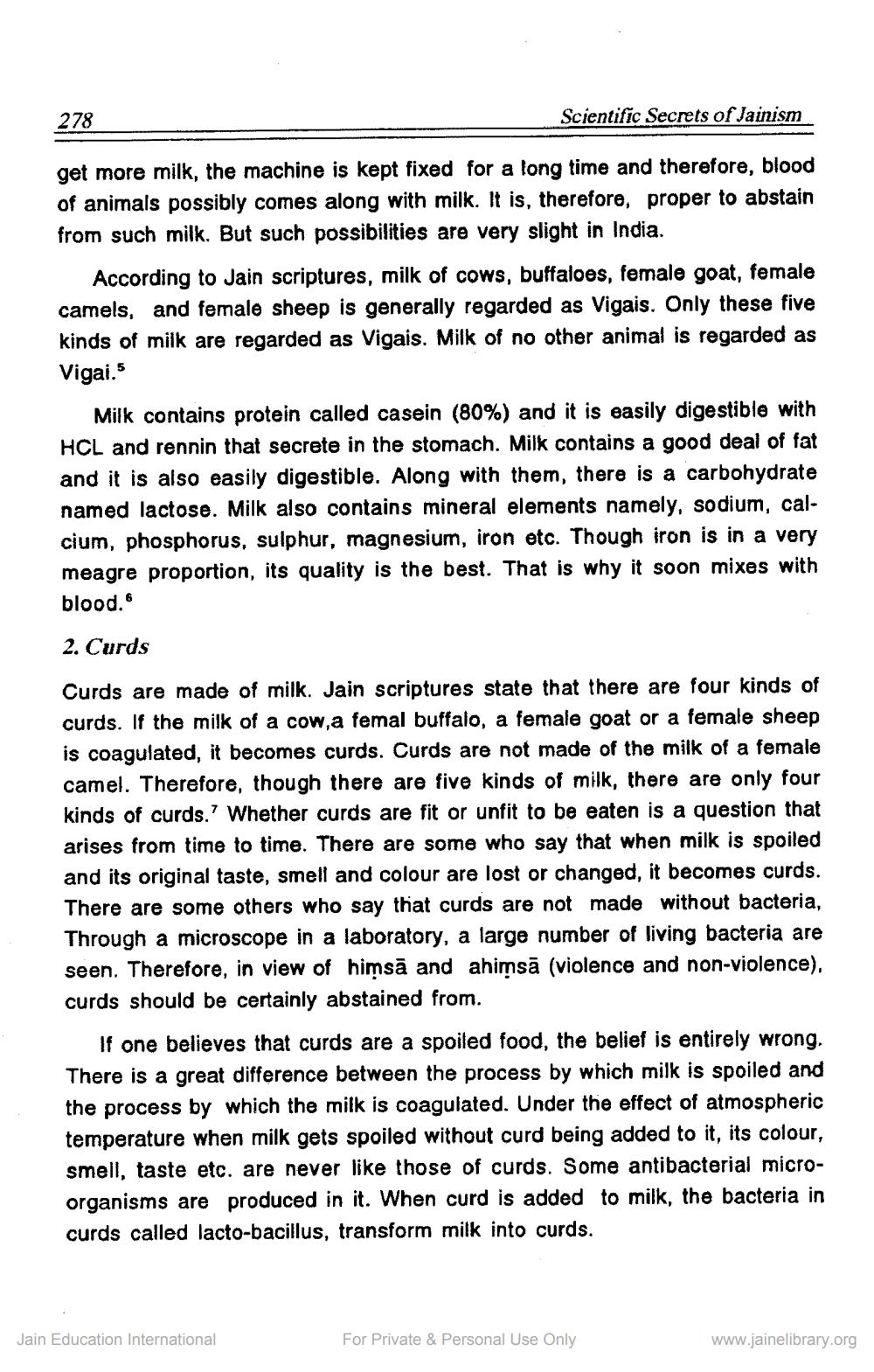________________
278
Scientific Secrets of Jainism
get more milk, the machine is kept fixed for a long time and therefore, blood of animals possibly comes along with milk. It is, therefore, proper to abstain from such milk. But such possibilities are very slight in India.
According to Jain scriptures, milk of cows, buffaloes, female goat, female camels, and female sheep is generally regarded as Vigais. Only these five kinds of milk are regarded as Vigais. Milk of no other animal is regarded as Vigai.5
Milk contains protein called casein (80%) and it is easily digestible with HCL and rennin that secrete in the stomach. Milk contains a good deal of fat and it is also easily digestible. Along with them, there is a carbohydrate named lactose. Milk also contains mineral elements namely, sodium, calcium, phosphorus, sulphur, magnesium, iron etc. Though iron is in a very meagre proportion, its quality is the best. That is why it soon mixes with blood."
2. Curds
Curds are made of milk. Jain scriptures state that there are four kinds of curds. If the milk of a cow, a femal buffalo, a female goat or a female sheep is coagulated, it becomes curds. Curds are not made of the milk of a female camel. Therefore, though there are five kinds of milk, there are only four kinds of curds.' Whether curds are fit or unfit to be eaten is a question that arises from time to time. There are some who say that when milk is spoiled and its original taste, smell and colour are lost or changed, it becomes curds. There are some others who say that curds are not made without bacteria, Through a microscope in a laboratory, a large number of living bacteria are seen. Therefore, in view of himsā and ahimsā (violence and non-violence), curds should be certainly abstained from.
If one believes that curds are a spoiled food, the belief is entirely wrong. There is a great difference between the process by which milk is spoiled and the process by which the milk is coagulated. Under the effect of atmospheric temperature when milk gets spoiled without curd being added to it, its colour, smell, taste etc. are never like those of curds. Some antibacterial microorganisms are produced in it. When curd is added to milk, the bacteria in curds called lacto-bacillus, transform milk into curds.
Jain Education International
For Private & Personal Use Only
www.jainelibrary.org




